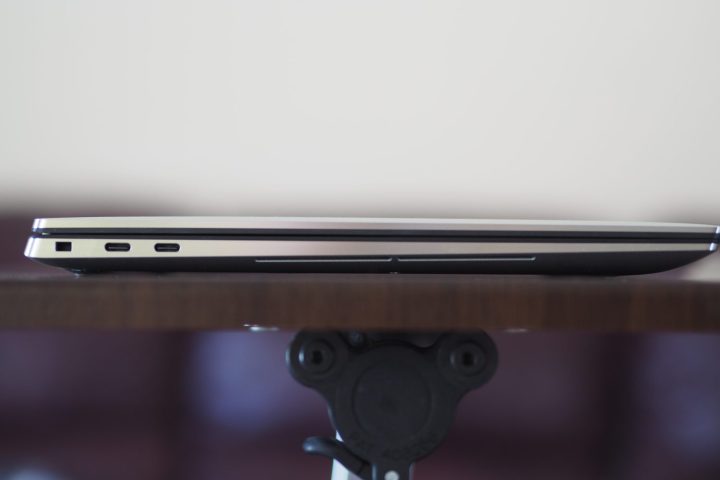Dell XPS 15 (9530)
MSRP $2,799.00
“The Dell XPS 15 (9530) gets a boosted GPU, but is starting to fall behind in a number of other areas.”
Pros
- Rock-solid construction and attractive aesthetic
- Strong productivity and creativity performance
- Decent 1080p gaming
- Excellent keyboard and touchpad
- Spectacular OLED display and outstanding audio
- Good battery life
Cons
- Gaming performance held back by underpowered GPU
- Overall performance is limited by thin chassis
- 720p webcam and Wi-Fi 6 are outdated technology
- Expensive
The XPS 15 has been my favorite 15-inch laptop for years. It’s always balanced power and s sleek design emphasized by its thin-bezel display.
But it’s been many years since the main design of this laptop has changed. In the interim, the Apple Silicon MacBook Pros came out, followed by a total redesign of the XPS 13 (9315). All of this has left the XPS 15 in a tough spot, which remains largely unchanged in 2023.
Despite the fact that many of my favorite elements of the XPS 15 are still around, the modest updates to CPU and GPU this year don’t feel like quite enough to keep up with the competition. The XPS 15 (9530) just doesn’t stand out as much as it did in the past.
Specs and configurations
| Dell XPS 15 (9530) | |
| Dimensions | 13.57 inches x 9.06 inches x 0.71 inches |
| Weight | 4.23 pounds |
| Processor | Intel Core i5-13500H Intel Core i7-13700H Intel Core i9-13900H |
| Graphics | Intel Iris Xe Intel Arc A370M Nvidia GeForce RTX 4050 (40W) Nvidia GeForce RTX 4060 (40W) Nvidia GeForce RTX 4070 (40W) |
| RAM | 8GB DDR5-4800MHz 16GB DDR5-4800MHz 32GB DDR5-4800MHz 64GB DDR5-4800MHz |
| Display | 15.6-inch 16:10 Full HD+ (1,920 x 1,200) IPS 15.6-inch 16:10 3.5K (3,456 x 2,160) OLED |
| Storage | 512GB PCIe SSD 1TB PCIe SSD 2TB PCIe SSD 4TB PCIe SSD 8TB PCIe SSD (2 x 4TB SSDs) |
| Touch | Optional |
| Ports | 2 x USB-C with Thunderbolt 4 1 x USB-C 3.2 Gen 2 1 x 3.5mm audio jack 1 x SD Card reader |
| Wireless | Wi-Fi 6 and Bluetooth 5.2 |
| Webcam | 720p with infrared camera for Windows 11 Hello |
| Operating system | Windows 11 |
| Battery | 86 watt-hours |
| Price | $2,249+ |
There will be more configurations available in time, including less expensive options, but for now, the cheapest XPS 15 (9530) you can buy is $2,250 for a Core i7-13700H CPU, 16GB of RAM, a 512GB SSD, an Nvidia GeForce RTX 4060 CPU, and a 15.6-inch Full HD+ IPS display. The highest-end machine has a $4,649 price tag for a Core i9-13900H, 64GB of RAM, two 4TB SSDs for a total of 8TB of storage, an RTX 4070, and a 15.6-inch 3.5K OLED panel. My review unit costs $2,800 for a Core i7, 32GB of RAM, a 1TB SSD, an RTX 4070, and the OLED display.
You can still buy the XPS 15 (9520) at a price as low as $1,100 for a Core i7-12700H, 8GB of RAM, a 512GB SSD, Intel UHD graphics, and a 15.6-inch Full HD+ IPS display. You can spend $2,100 for a Core i7-12700H, 16G of RAM, a 1GB SSD, an RTX 3050 Ti, and the OLED display.
As we’ll see, the XPS 15 (9530)’s performance bump alone may not be able to justify the $700 increase in price, and so unless you just have to have the fastest GPU performance in an XPS 15, you could opt for the older model and save some serious cash.
Literally no design changes
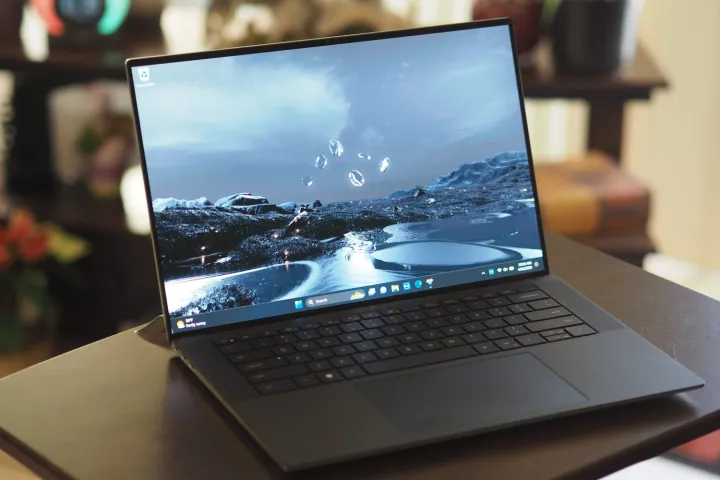
I could copy and paste the design section from the XPS 15 (9520) review and call it a day. There’s literally no difference whatsoever between it and the XPS 15 (9530) except for the internal components. Whether that’s a good or a bad thing depends entirely on how well you liked the XPS 15 (9520)’s design.
Personally, I liked it quite a bit, and so I was OK with Dell keeping things the same with the XPS 15 (9530). It’s not quite as modern as the XPS 13 models that are now all-aluminum with the more common minimalist styling. But I like the carbon fiber on the palm rest, not just in how it enhances the look, but also in how much more comfortable it is than cold metal. The same aluminum chassis and lid remain in place, and the aesthetic is just as sleek as before. And you still get the tiny display bezels that are the smallest you’ll find on a 15-inch laptop.
The XPS 15 (9530) is also just as rock-solid, rivaling Apple’s MacBook Pro in its solidity. The hinge retains the dual-clutch mechanism that makes it as smooth to open and close as a MacBook. There are few laptops as well-built, and I’m glad to see that hasn’t changed. Neither has the laptop’s reasonable 0.71 inch thickness and 4.23 pound weight, both of which are low for such a powerful 15-inch machine.
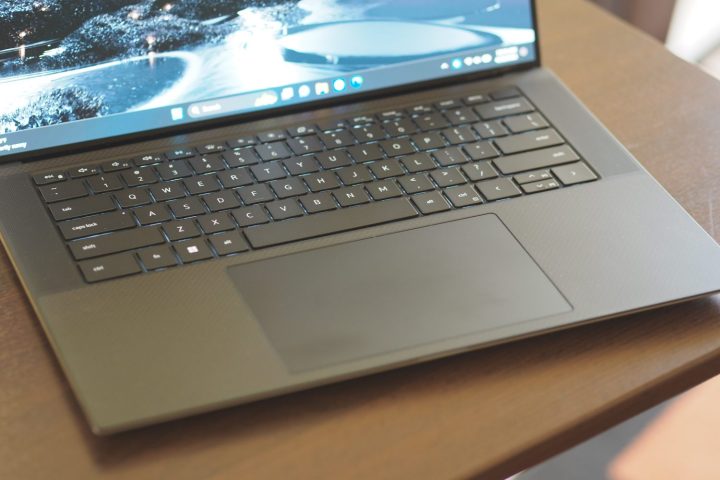
You’ll find the same keyboard, with excellent key spacing, large keycaps, and snappy, precise switches that might be just a little light for some people. It’s not quite as good as Apple’s Magic Keyboard or the ones you’ll find on HP’s Spectre line. The touchpad is spacious, but remains a mechanical version. It’s smooth and responsive with quiet, confident clicks, but the XPS 15 deserves a haptic version to compete with Apple’s excellent Force Touch touchpad.
Connectivity remains exactly the same as with last year’s XPS 15 (9520), which is to say it’s limited for a 15-inch laptop. You get USB-C (with Thunderbolt 4), and that’s it. Dell includes a dongle with a USB-A and HDMI port. And wireless connectivity remains a generation behind with just Wi-Fi 6, not the newer Wi-Fi 6E standard.
Surprisingly, Dell also kept the 720p webcam when most manufacturers are transitioning to 1080p. That means the XPS 15 (9530) isn’t a modern choice for hybrid workers needing a great videoconferencing experience. This is a bummer. It’s not as if at-home needs for videoconferencing have slowed down at all. The need for high-resolution cameras in laptops is still high, and the XPS 15 remains one of the only high-end laptops of this kind to remain stagnant on this front.
The infrared camera made it to the new model, providing facial recognition for Windows 11 Hello support.
Faster, but thanks mainly to a better GPU
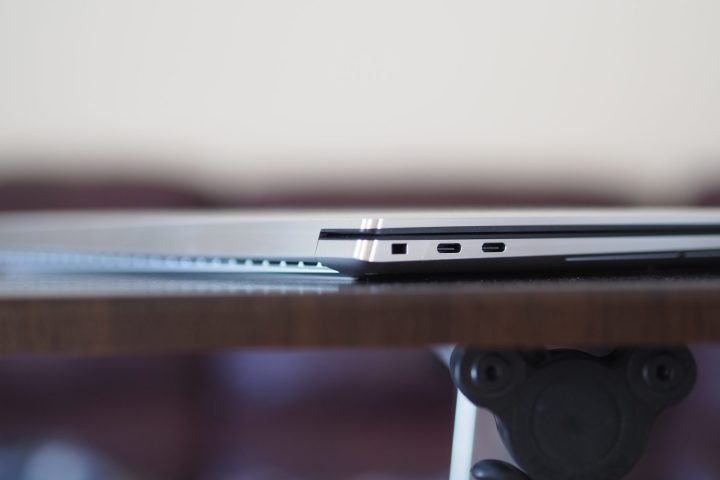
The XPS 15 (9520) was limited to the Nvidia GeForce RTX 3050 Ti GPU. That was fast enough to give a small boost to creative apps, but not quite fast enough for anything better than 1080p gaming at lower settings. The XPS 15 (9530) offers an RTX 4070, albeit limited to 40 watts, due to thermal constraints. It’s a good thing there’s a faster GPU option because the XPS 15 (9530) didn’t make a significant leap in CPU performance.
Yes, it uses a 13th-gen 45-watt Intel Core i7-13700H with 14 cores (six Performance cores at up to 5.00GHz and eight Efficient cores at up to 3.7GHz) and 20 threads. Theoretically, that’s faster than the Core i7-12700H with the same core and thread count, but slower Turbo Boost speeds that ran in the XPS 15 (9520). And indeed, in normal mode, the newer model is faster. But in performance mode, there’s almost no difference between them. That’s likely due to absolute thermal limits with the same thin and light chassis. The XPS 15 (9530) did match the Samsung Galaxy Book3 Ultra in performance, but fell slightly behind the Apple MacBook Pro 14 with the M2 Max CPU in a few tests. And the XPS 15 (9530) also did much better in the PCMark 10 Complete benchmark.
In the PugetBench Premiere Pro benchmark, though, which runs in a live version of Adobe’s Premiere Pro app that can utilize the GPU to speed up various tasks, the XPS 15 (9530) benefits from its faster GPU. The XPS 15 (9520) scored 760 in normal mode and 729 in performance mode. The XPS 15 (9530) hit 866 in normal mode and a much stronger 1,023 in performance mode. That’s less of a bump than I expected in normal mode, just 14%, but it’s a whopping 50% uptick in performance mode. The latter is a strong PugetBench score for a thin-and-light creator’s workstation, and it rivals the MacBook Pro 14 M2 Max’s score of 1,093.
So, the XPS 15 (9530) remains a high-speed productivity machine, and the faster GPU makes for a much more powerful creator’s laptop.
| Geekbench (single / multi) |
Handbrake (seconds) |
Cinebench R23 (single / multi) |
Pugetbench Premiere Pro |
|
| Dell XPS 15 (9530) (Core i7-13700H) |
Bal: 1,787 / 11,978 Perf: 1,830 / 11,769 |
Bal: 79 Perf: 76 |
Bal: 1,865 / 13,386 Perf: 1,868 / 13,927 |
Bal: 866 Perf: 1,023 |
| Dell XPS 15 (9520) (Core i7-12700H) |
Bal: 1,470 / 9,952 Perf: 1,714 / 11,053 |
Bal: 100 Perf: 77 |
Bal: 1,509 / 11,578 Perf: 1,806 / 13,313 |
Bal: 760 Perf: 729 |
| Samsung Galaxy Book3 Ultra (Core i7-13700H) |
Bal: 1,647 / 12,206 Perf: 1,815 / 12,307 |
Bal: 80 Perf: 74 |
Bal: 1,712 / 13,278 Perf: 1,908 / 14,938 |
Bal: 679 Perf: 982 |
| Lenovo Slim 7i Pro X (Core i7-12700H) |
Bal: 1,670 / 11,971 Perf: 1,730 / 12,356 |
Bal: 90 Perf: 79 |
Bal: 1,731 / 11,379 Perf: 1,791 / 13,276 |
Bal: 716 Perf: 769 |
| Samsung Galaxy Book3 Pro 360 (Core i7-1360P) |
Bal: 1,800 / 8,960 Perf: 1,781 / 9,071 |
Bal: 109 Perf: 99 |
Bal: 1,711 / 8,389 Perf: 1,750 / 9,182 |
Bal: N/A Perf: N/A |
| Lenovo Slim 7 14 (AMD Ryzen 7 7735HS) |
Bal: 1,493 / 9021 Perf: 1,498 / 9210 |
Bal: 95 Perf: 84 |
Bal: 1,551 / 12,536 Perf: 1,553 / 13,107 |
Bal: 464 Perf: 501 |
| Apple MacBook Pro 14 (M2 10/38) |
Bal: 1,973 / 14,596 Perf: N/A |
Bal: 85 Perf: N/A |
Bal: 1,608 / 14,789 Perf: N/A |
Bal: 1,093 Perf: N/A |
We don’t have many RTX 4000 series laptops to compare to, and the XPS 15 (9530) is the first we’ve tested with the RTX 4070. So, I selected a group of previous-generation laptops in the same basic range as a comparison group. Dell ran the RTX 4070 at just 40W to manage thermals (the XPS 17 will run it at 60W, and the chip is capable of between 35W and 115W).
Note also that Dell installed Nvidia’s Studio drivers, which aren’t as fast in gaming, but provide additional performance and stability for certain creative, engineering, and scientific applications. So, the XPS 15 (9530) wasn’t dominant in our gaming benchmarks despite running a newer and higher-end GPU.
For example, it was slower than the HP Envy 16 with the RTX 3060 in the 3DMark Time Spy test, and it couldn’t keep up with the RTX 3070 Ti in the Lenovo ThinkPad X1 Extreme Gen 5 in performance mode. It was considerably faster, though, than the XPS 15 (9520) with its RTX 3050 Ti.
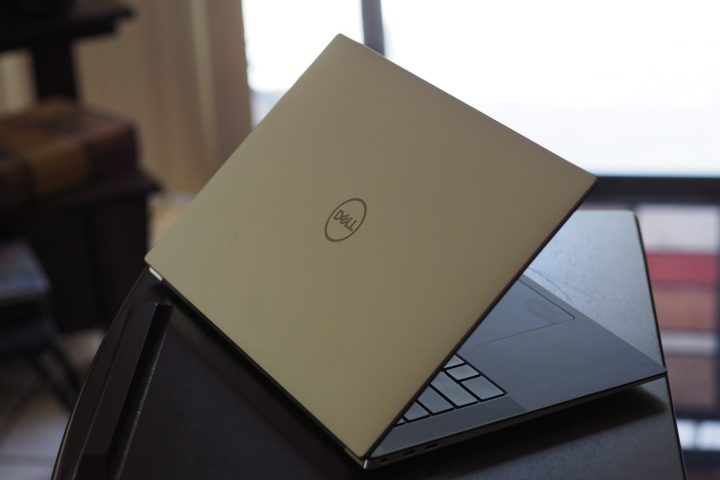
In our game benchmarks, the XPS 15 (9530) was roughly equal to the Envy 16 and the ThinkPad in Civilization VI, providing enough power to run comfortably at 1440p and ultra graphics. The Dell was stronger in Cyberpunk 2077, taking the top spot and managing to beat the MSI Creator Z16P with the RTX 3080Ti (although that machine was unusually slow for that GPU). Finally, in Assassin’s Creed Valhalla, the XPS 15 (9530) was competitive, although the ThinkPad was almost as fast in performance mode. Oddly enough, the XPS 15 (9530) was faster at 1440p than 1080p in balanced mode, hitting 88 frames per second (fps).
Ultimately, the XPS 15 (9530) is a better gaming laptop than last year’s XPS (9520), and so if that’s what’s held you back from buying that laptop, it’s now a more viable option for solid 1080p gaming with the XPS 15 (9530). But it’s limited by its underpowered RTX 4070. Other laptops will provide the GPU with more power and be much faster, and likely be able to run more games at 1440p. That’s the price for having a relatively thin and light machine.
| Assassin’s Creed Valhalla (1080p/1200p Ultra High) |
Cyberpunk 2077 (1080p/1200p Ultra) |
Civilization VI (1080p Ultra) |
3DMark Time Spy |
|
| Dell XPS 15 9530 (RTX 4070) |
Bal: 65 fps Perf: 105 fps |
Bal: 60 fps Perf: 60 fps |
Bal: 131 fps Perf: 137 fps |
Bal: 7,077 Perf: 7,632 |
| Dell XPS 15 (9520) (RTX 3050 Ti) |
Bal: 50 fps Perf: 64 fps |
Bal: N/A Perf: N/A |
Bal: 82 fps Perf: 78 fps |
Bal: 4,470 Perf: 4,520 |
| Lenovo ThinkPad X1 Extreme Gen 5 (RTX 3070 Ti) |
Bal: 37 fps Perf: 97 fps |
Bal: 29 fps Perf: 46 fps |
Bal: 30 fps Perf: 140 fps |
Bal: 5,494 Perf: 9,114 |
| HP Envy 16 (RTX 3060) |
Bal: 70 fps Perf: 71 fps |
Bal: 40 fps Perf: 41 fps |
Bal: 125 fps Perf: 132 |
Bal: 7,645 Perf: 8,040 |
| MSI Creator Z16P (RTX 3080 Ti) |
Bal: 55 fps Perf: 60 fps |
Bal: 30 fps Perf: 49 fps |
Bal: 60 fps Perf: N/A |
Bal: 9,251 Perf: 10,054 |
| Dell XPS 17 9720 (RTX 3060) |
Bal: 23 fps Perf: N/A |
Bal: 45 fps Perf: N/A |
Bal: 111 fps Perf: N/A |
Bal: 6,757 Perf: 6,958 |
The XPS 15 (9530) uses the same 86 watt-hour battery as its predecessor, and so far, we haven’t seen any significant efficiency improvements with Intel’s 13th-gen CPUs. So, I was expecting similar battery life to the XPS (9520), which provided surprisingly good longevity for a laptop with a powerful CPU and a power-hungry 15.6-inch OLED display.
To begin with, the XPS 15 (9530) hit 9.75 hours on our web-browsing test, which is a solid score and exactly five minutes more than the XPS (9520). In the PCMark 10 Applications test, which provides a good idea of battery life with a moderately demanding productivity workflow, this XPS lasted about 30 minutes longer at 10.75 hours. And in our video-looping test, it managed 11.75 hours, about an hour less than its predecessor.
Overall, battery life remains a strength. The laptop might not get you through a full day of demanding productivity work like the MacBook Pro, but typical users might not need to carry their chargers around.
The same spectacular OLED display
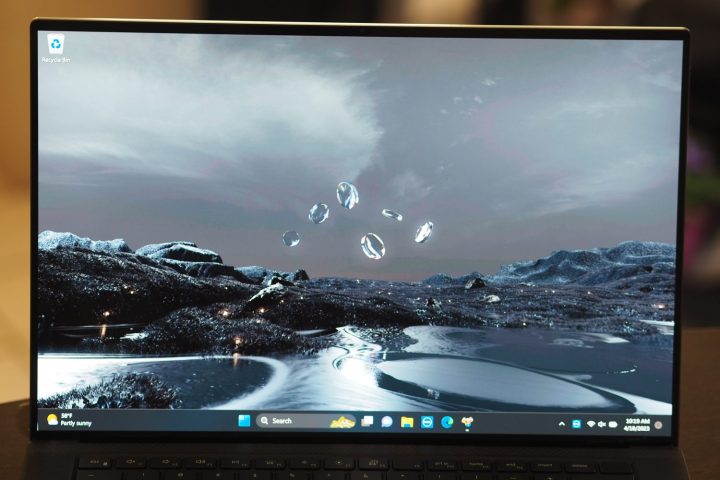
I reviewed the XPS 15 (9530) with the 3.5K OLED display, and it’s just as awesome as before. It’s not terribly bright at 385 nits (many recent premium laptops exceed 400 nits), but its contrast is incredibly deep at 24,850:1, and its colors are wide at 100% of sRGB, 96% of AdobeRGB, and 100% of DCI-P3. Color accuracy is a bit above the Delta-E of 1.0 or less that creators want to see, at 1.31, but it’s still good enough for most creative work.
It appears to be the same exact panel used on last year’s XPS 15, and that’s a good choice. It’s more than sharp enough and provides the colors and contrast to please productivity users, creators, and media consumers alike. The lack of a higher refresh rate is a shame, though. We’re starting to see more and more OLED and mini-LED panels with higher refresh rates, which would have made this an even better laptop for gaming.
The audio is also the same as before, with two 2.5-watt woofers and two 1.5W tweeters that put out some of the best sound in a Windows machine. It’s not as full and doesn’t have the bass of Apple MacBook Pro machines, but the XPS 15 (9530) is great for streaming video and music without resorting to headphones.
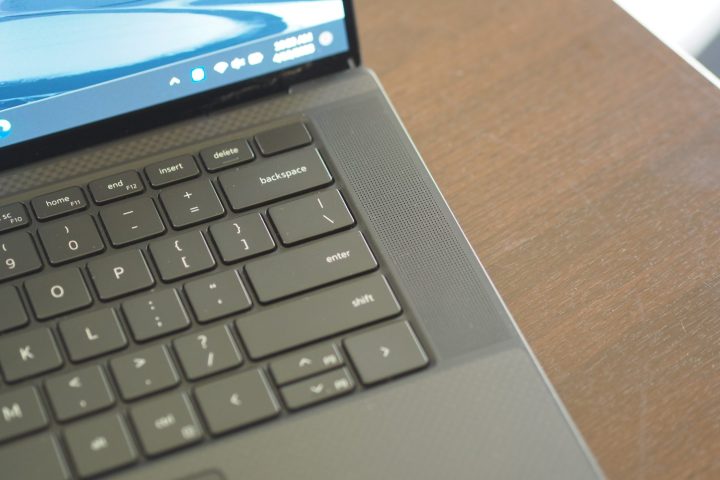
A somewhat lazy update
As I’ve mentioned throughout this review, there’s much to like about the XPS 15 (9530)’s design. It’s still sleek and modern enough that newer 15-inch laptops don’t eclipse it, but even so, it’s starting to feel a little dated. Certainly, you can’t fault the build quality.
But the CPU upgrade was underwhelming, providing minimal performance improvement — unlike the XPS 15 (9520), which was a big jump over its previous generation. It’s only the addition of the RTX 4070 option that gives the XPS 15 (9530) a meaningful boost in performance, and even there, it’s less than it might be due to the GPU running close to its minimal power specification. Toss in an old-school 720p webcam and Wi-Fi 6, and this year’s XPS 15 lacks some of the cutting-edge feel it once had.
Editors’ Recommendations


